Treadmill taking some lumps over the years? Just like a high-mileage car, even the best treadmills aren’t immune to time. All those successful runs and challenging workouts can lead to some breakdowns across key components, especially if you’ve been lax with your regular maintenance schedule. So, if you don’t want to completely curb your workout routine, it can be helpful to understand how to fix common treadmill problems when they arise.
Troubleshooting common dilemmas across your exercise equipment’s running belt, motor, console display, and more doesn’t require a doctorate in mechanical engineering, though. Many problems have their solution laid out clearly in your treadmill’s owner’s manual. Still, identifying the problem is oftentimes half the battle, which is where we come in. We’ve outlined five common treadmill problems below, along with their potential solutions to help you keep your cardio machines running smoothly for years to come.
Common Treadmill Problems And How to Troubleshoot Them
“Treadmills are generally tech-heavy, complex machines,” says Amanda Capritto, our expert reviewer, so home gym enthusiasts can expect a bit of treadmill repair in their lives at some point. Below, we’ve outlined common treadmill problems, where they can stem from, and how to address the issues so your running workouts aren’t curtailed for too long.

We’ve also gone ahead and outlined the tools required for each job. Typically, all that will be needed is your owner’s manual and a bit of patience, but small hand tools and one of the best treadmill lubricants may be necessary for larger tasks. Ready to put your handyman skills to the test? Let’s hop right in.
Editor’s Note: If you’ve thrown out your owner’s manual, you’re not out of luck. Many brands like NordicTrack, ProForm, and others have taken their instructions into the digital age with manuals for each treadmill model available online. If you know your specific treadmill brand and model, you can likely find the required documents with just a quick search.
Erratic Treadmill Speed
Whether you use your treadmill for running, interval training, walking, or another workout discipline, you want your speed to be as consistent as possible throughout your strides. If you feel your treadmill belt is showcasing erratic speed, you’ll want to correct this — and the problem can stem from a variety of areas.
First, examine your treadmill’s location. When figuring out where to position your treadmill, you’ll want to opt for a level, grounded patch of flooring that won’t have your treadmill base teetering and tottering during exercise. Make sure your treadmill is level before diagnosing further.
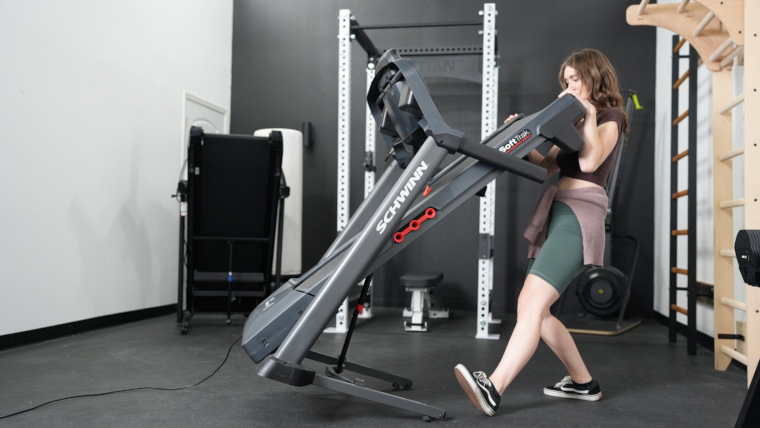
Next, you’ll want to read through your trusty owner’s manual and find the recommended speed setting for your machine. Dial in the treadmill to this recommended pace, but do not get on the belt. Observe the belt revolutions for a few minutes.
If you notice any hitching as it moves through its spins, this can indicate that there’s interference or that a new belt is required. For information on how to go about this, please refer to our guide on how to adjust a treadmill belt for cleaning, lubrication, and replacement.
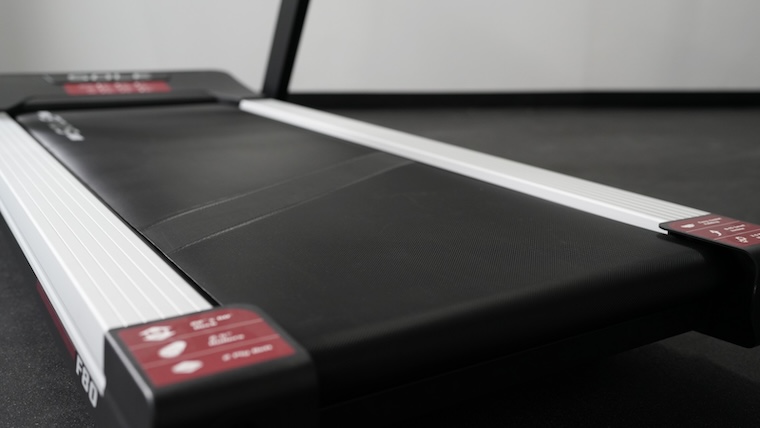
If you’re watching the belt revolve with no qualms and the treadmill shuts down entirely, you can pinpoint the speed problem to the electronics. A faulty circuit could be the culprit, so we always recommend having your treadmill plugged directly into an outlet with a dedicated circuit breaker — do not use an extension cord. If you’ve determined it’s the treadmill motor, refer to your user manual for proper troubleshooting steps or call in a treadmill doctor.
Burning Smell
If you notice a burning odor when training, those aren’t the calories. A burning smell can be the result of a major issue and potentially lead to a larger fire, so it’s pivotal that you immediately hit the power switch on your treadmill, shut everything down, and remove the power cord from its outlet.
Burning odors can be caused by high friction between your running deck and belt. Use a proper treadmill lubricant to help remedy the issue. This can also be a good time to vacuum any dust from the motor case, as this debris can also lead to that burning funk — think about the first time you turn on your furnace every winter.
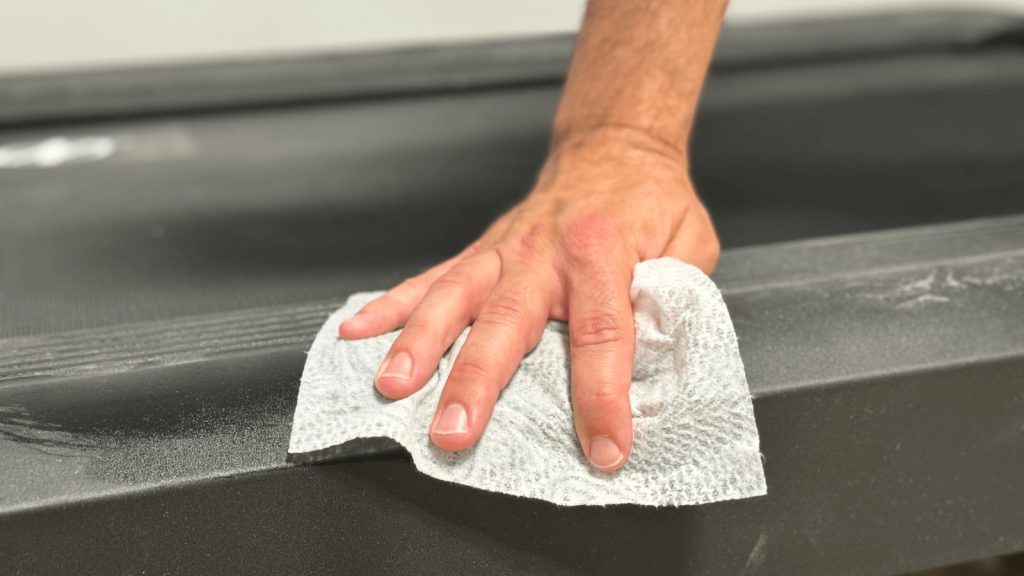
For a burning smell linked to a power surge or electrical issue, the repair can be more involved. Thankfully, many top machines — even the best budget treadmills — carry a robust warranty package that can help cover any needed electrical parts. This is why finding a treadmill with ample coverage from the start is an absolute must. “I recommend looking for 10 years on the frame, at least two years on parts, and at least one year for labor,” says Capritto.
Treadmill Belt Slippage
The belt slipping is another common issue you may encounter over your machine’s lifespan. Oftentimes, a slipping drive belt can result from excessive lubrication or a problem across the belt’s tension, meaning it’s either too tight or too loose.
To check your belt’s tension, lift it up by the sides at the center of the track. You should be able to lift the belt between 2 and 3 inches from its resting position. If you can lift higher, the belt is too loose. If the belt won’t budge, it’s too tight. In either situation, you’ll need to correct the tension and align the belt back to its proper positioning.
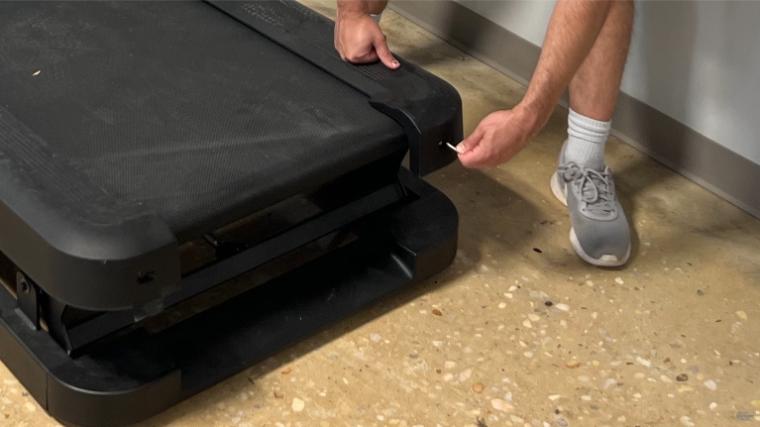
Again, refer to your treadmill’s user manual for proper alignment and tightening steps. This will likely require some hand tools, too, including some Allen keys, pliers, socket wrenches, or screwdrivers, depending on your machine’s build.
Read through your specific instructions, gather your tools, and get after it. We also recommend using a silicone treadmill lubricant at this time (not too much) for some additional preventative maintenance.
Display Errors
“High-def touchscreen consoles are becoming the norm,” says Capritto in reference to the abundance of treadmills with screens available today. As such, it can be downright frustrating when you go to take in a trainer-led workout only to find that the treadmill console won’t function properly.
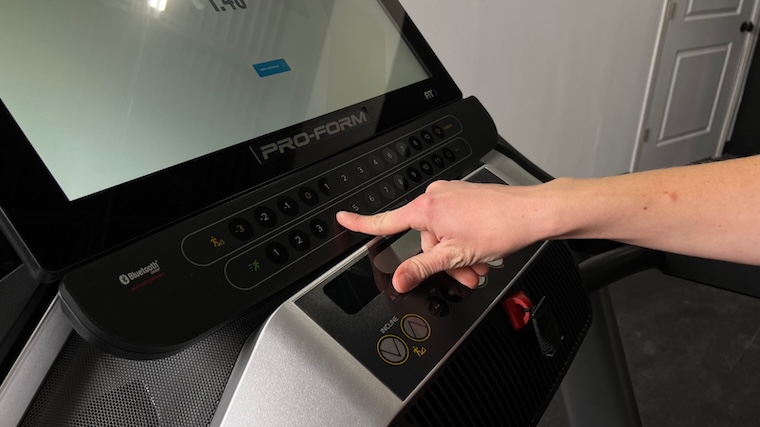
Treadmill display issues can be one of the most common problems dealt with in your home gym. Thankfully, though, they are often the result of minor electrical issues and take just a few steps to correct.
The first troubleshooting tip is to check that your machine is plugged in properly to its dedicated outlet. If your console runs on batteries, it can also be wise to check their conditions as well. After all, can you expect a power-reliant component to run properly if there’s no power being delivered to the source?
If power isn’t the issue, a reset to your treadmill’s circuit breaker could be in order. Unplug or remove the batteries, wait 60 seconds, and then power back up.
Power Supply Issues
Fumbling through troubleshooting steps and still can’t find a solution? Well, did you check to see if your treadmill was plugged in? While it can be an overlooked solution, sometimes your power cord can be the culprit of all your treadmill headaches.
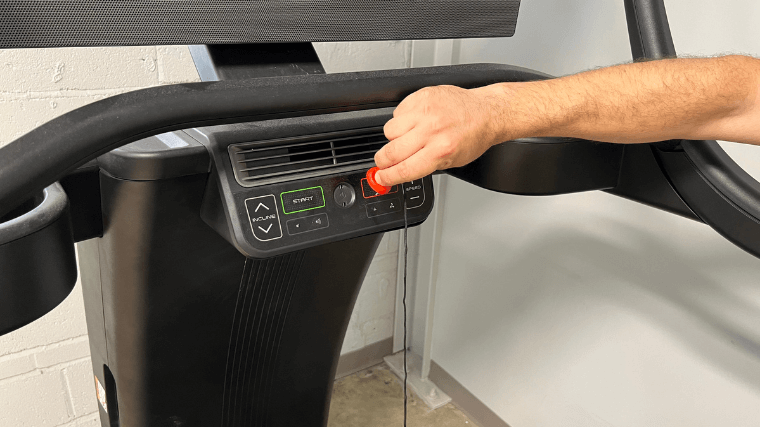
You could have moved the machine slightly and pulled the prongs from their power source. You could have flipped the power switch off to conduct some routine maintenance and forgotten to turn it back on. Your safety key may not be in its proper position to activate operations. We’re not judging at all — trust us, we’ve been here, too.
[Related: Where Can I Get a Replacement Treadmill Safety Key?]
Preventative Maintenance Tips
While all the aforementioned treadmill problems can rear their heads unexpectedly, you can definitely set yourself up for fewer headaches down the road by adopting a treadmill maintenance regimen. In this sense, you can compare your treadmill to your car — doesn’t your automobile run better if you care for it regularly with oil changes, check-ups, and a cleaning every now and again?
But a solid treadmill maintenance schedule doesn’t need to include a 50-point inspection after each workout. A simple wipe down and disinfection is all you really need on a daily occurrence, along with keeping tabs on any strange noises or smells.
It can also be beneficial to vacuum around your treadmill weekly and check for any signs of wear across the belt or frame, especially if your running or walking belt is spinning each day (that’s a lot of potential for dust and debris to make its way into your treadmill’s internals).
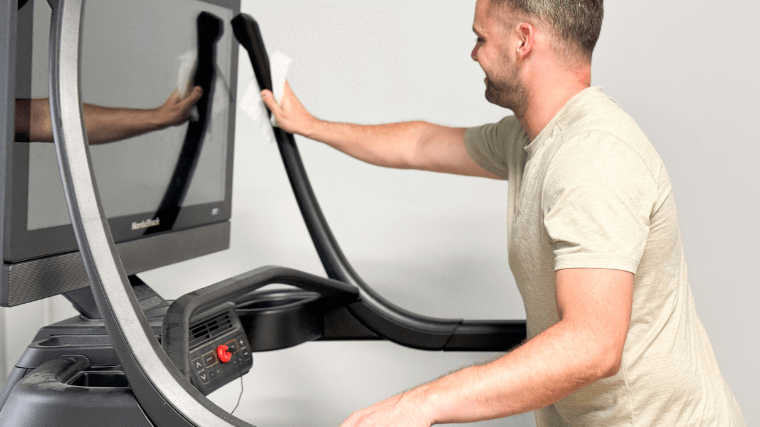
The more involved processes — lubricating the belt, vacuuming the motor control board, checking the tension to prevent the belt from slipping off-center — can be done periodically throughout the year. We recommend every three to six months. Sure, it may seem like a headache now, but these small steps can make a big difference in ensuring your tread is always ready to perform.
Final Word
Amanda Capritto, our expert reviewer, states, “Treadmills, regardless of price range, provide an opportunity for people to access cardiovascular exercise when it may not be safe to do so outdoors.” So, when your treadmill stops working, it can be a real detriment to your fitness goals. Understanding how to fix common treadmill problems can be beneficial to your progress and equipment, allowing you to address and diagnose issues quickly with handy solutions that won’t sideline your training for long.
Of course, not every issue can be resolved with DIY gusto. Larger breakdowns across the motor and frame do occur, which is why we always recommend purchasing a treadmill with a worthwhile warranty package. That said, many treadmill problems can be eradicated with a simple maintenance schedule. Treat your machine with respect, use these troubleshooting tips when necessary, and help create a trustworthy home gym setup that’s free of unwanted breakdowns or operating snafus.
FAQs: How to Fix Common Treadmill Problems
What is the most common treadmill problem?
Your treadmill can suffer from a range of issues over its lifespan, but some problems are more common than others. Display errors, slipping belts, or excessive heating due to a lack of lubrication or excessive dust and debris can be typical pitfalls to expect when using your treadmill on a regular basis.
What is the average lifespan of a treadmill?
With regular maintenance and upkeep, most treadmills can carry a lifespan between seven and 10 years.
How often do you need to lubricate a treadmill?
A treadmill belt will require some lubrication with a silicone-based lubricant every now and again to help prevent fraying or friction across this key component. We recommend servicing your treadmill belt, deck, and rollers every three months to ensure your machine is operating at peak levels.